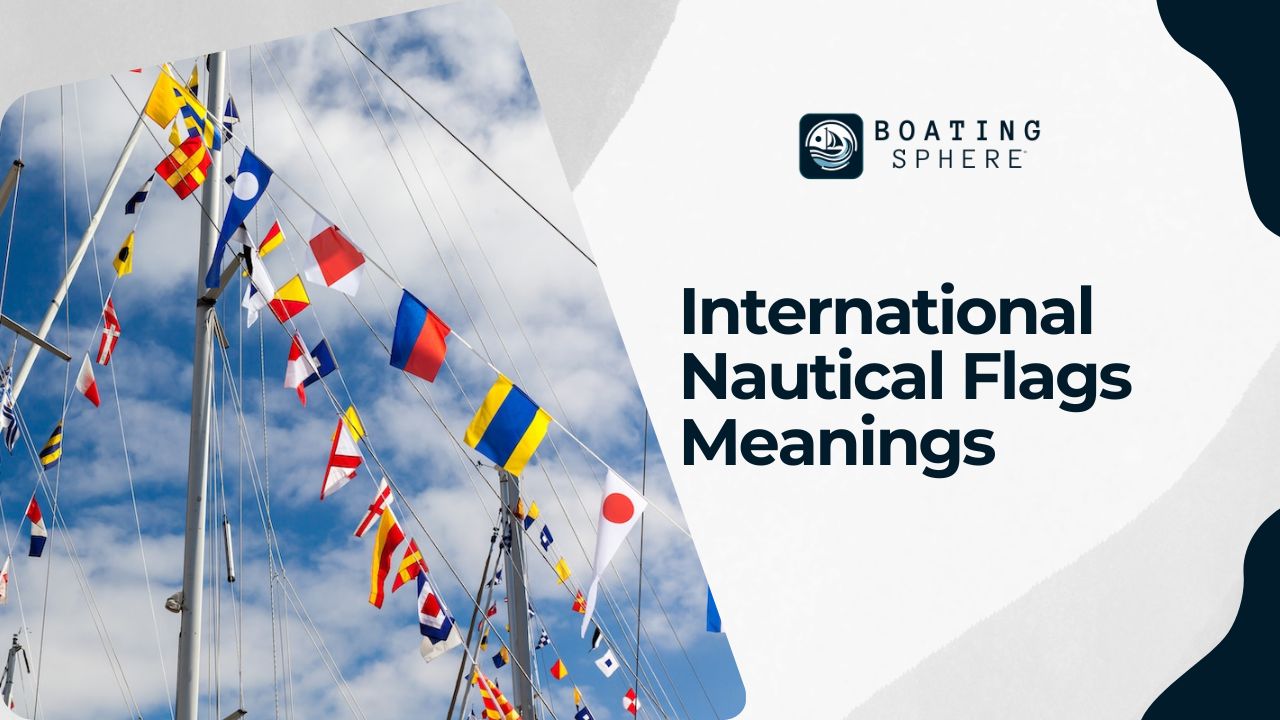No matter their size, all boats use electronic gadgets to find their way and talk to others. But even in our modern, connected world, sailors still use special flags to send messages at sea. This old method is still the fastest way to share information today. Navies use these flags to talk to each other and friendly ships. People who sail for fun also use these flags to quickly tell other boats about things like a person diving in the water or if there is an emergency.
Want to know what these flags mean? Here’s a quick explanation of nautical flags.
Nautical Flag Shapes and Types
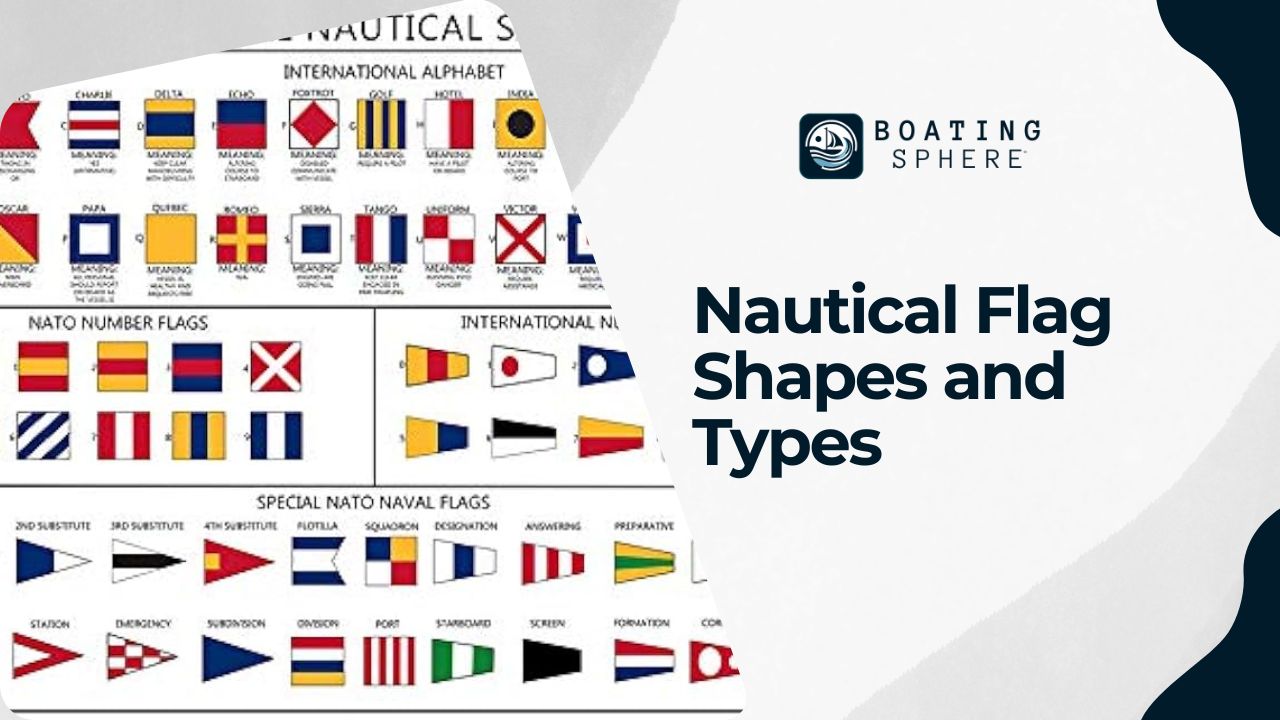
Understanding the shapes and categories of nautical flags is essential. Most of these flags are squares, but pendants are also common, distinguishable by their triangular form with a flat tip. Additionally, you’ll come across substitutes (or repeaters), which are also triangular. Given that this article is a basic introduction to flags, we’ll highlight squares and pendants, the varieties you’ll most likely encounter during regular boating activities.
Nautical Flag Letters and Numbers
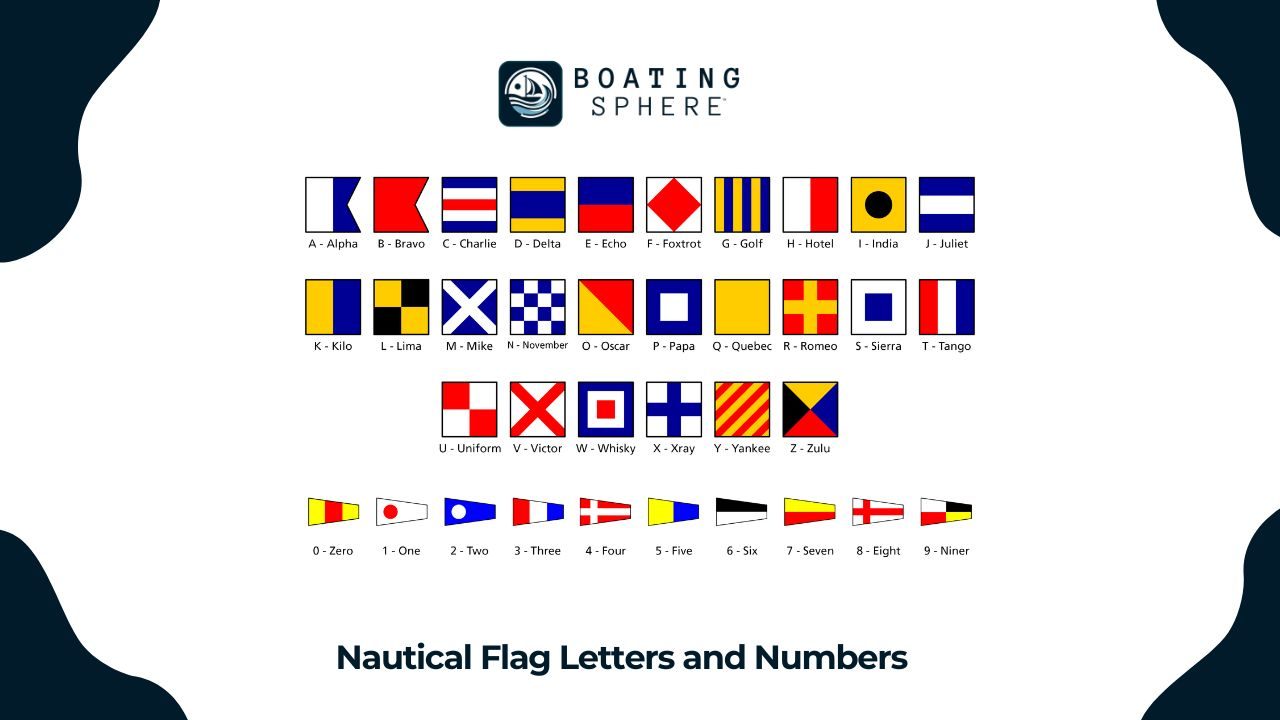
There are 26 square nautical flags, each symbolizing a distinct alphabet letter. Each flag corresponds to an international code word for the alphabet’s letters, like Alpha for A, Bravo for B, Charlie for C, Delta for D, etc.
Also, the ten pendants represent numbers from zero to nine. To indicate numbers ten and above, flags are combined on a boat.
Nautical Flag Colors
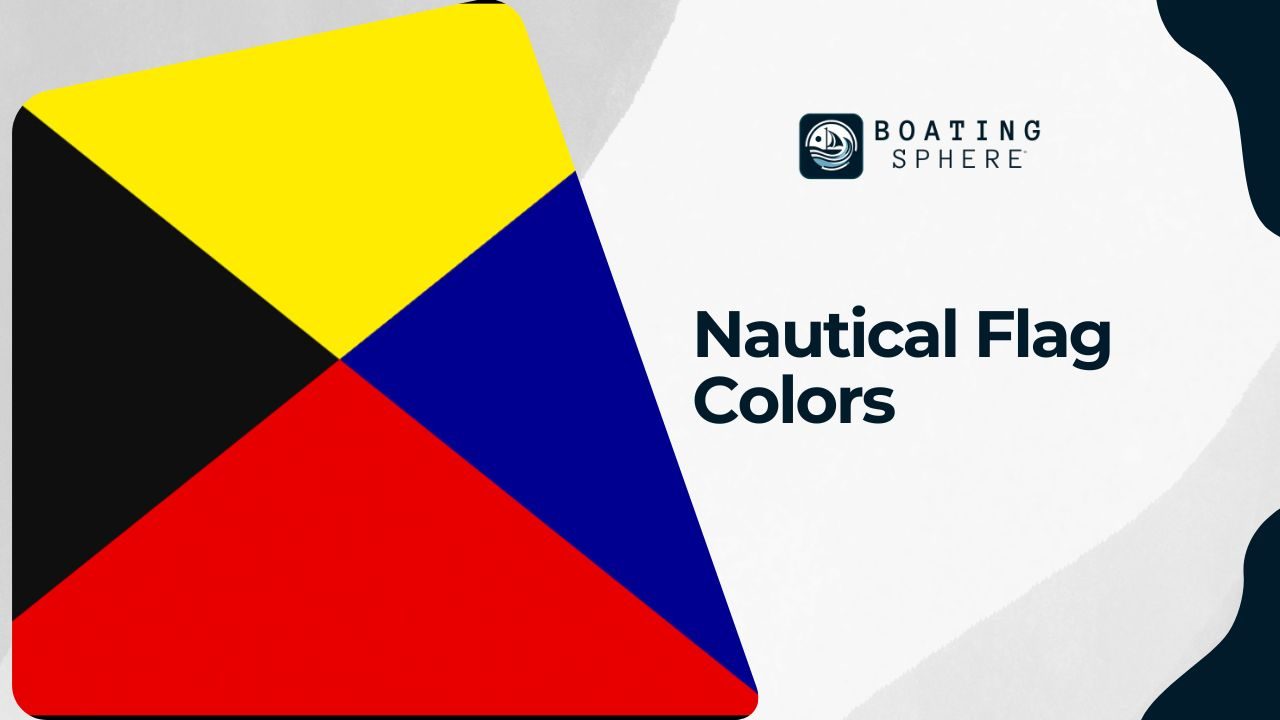
Nautical flags are limited to five colors: black, blue, red, yellow, and white. These colors are chosen for their visibility against the backdrop of the sea, easily spotted with the naked eye or through binoculars on the horizon. Flags might feature a single color or a mix of these colors.
Nautical Flags Meaning
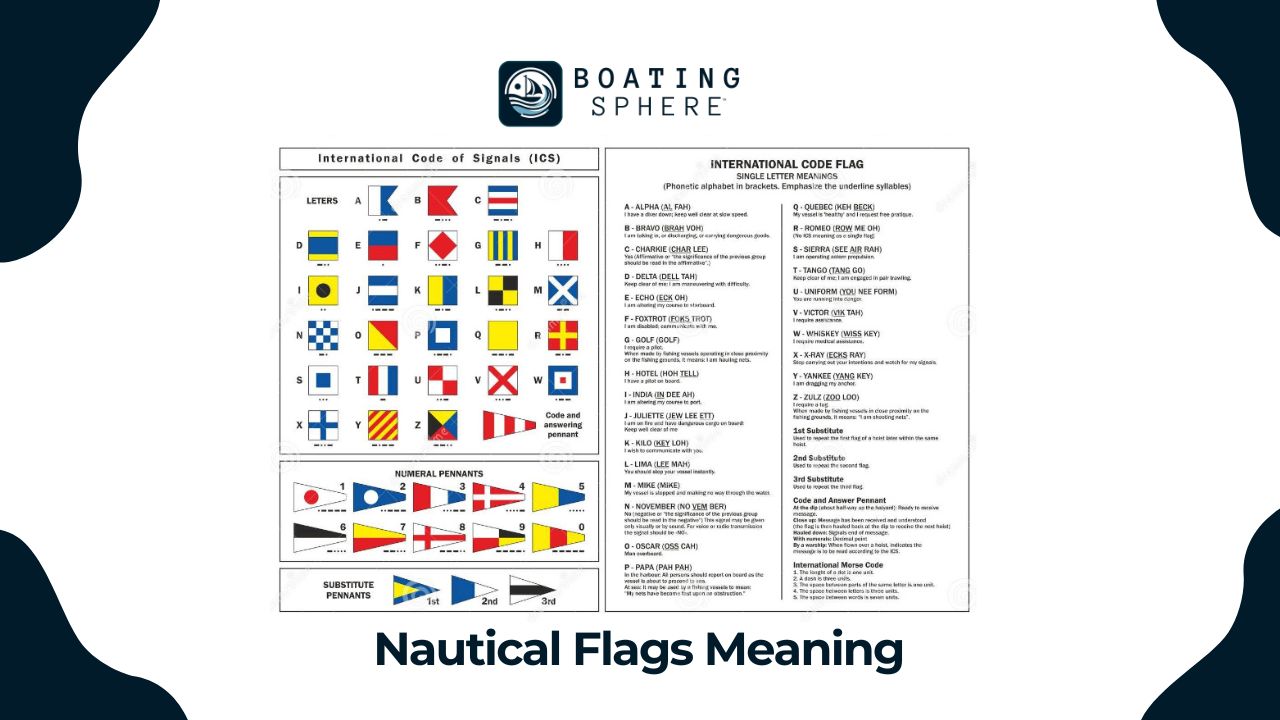
Nautical flags can be flown singly or in combinations of up to seven flags to communicate specific messages.
- For instance, the A (Alpha) flag alone signals “diver down, keep clear.”
- The W (Whiskey) flag indicates a medical emergency requiring assistance.
- Combining the D (Delta) and V (Victor) flags translates to “I am having trouble maneuvering and need help.”
- The pairing of the J (Juliet) and L (Lima) flags warns of the potential danger of running aground.
Generally, two-flag signals often signify distress or difficulty in maneuvering. When three or more flags are used, including pendants, they can represent compass points, geographical information, ship names, time and position details, and coordinates.
Communication with Nautical Flags
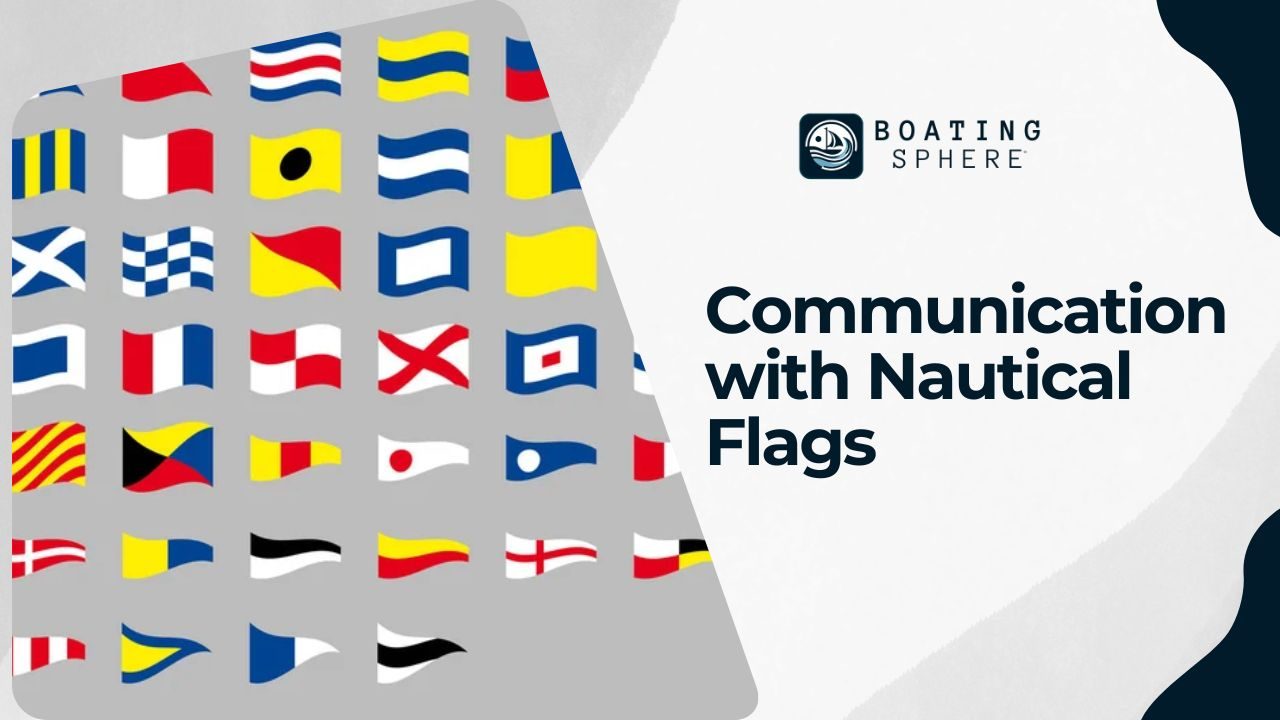
Nautical flags serve as a universal means of communication among boaters in standard situations, yet they can also express specific messages in particular contexts.
For instance, race committees use unique combinations of flags to signal events like a race’s impending start in four minutes or a course alteration. Similarly, the U.S. Navy employs a system of flag signals understood exclusively by its members for inter-ship communication.
Was this page helpful?

